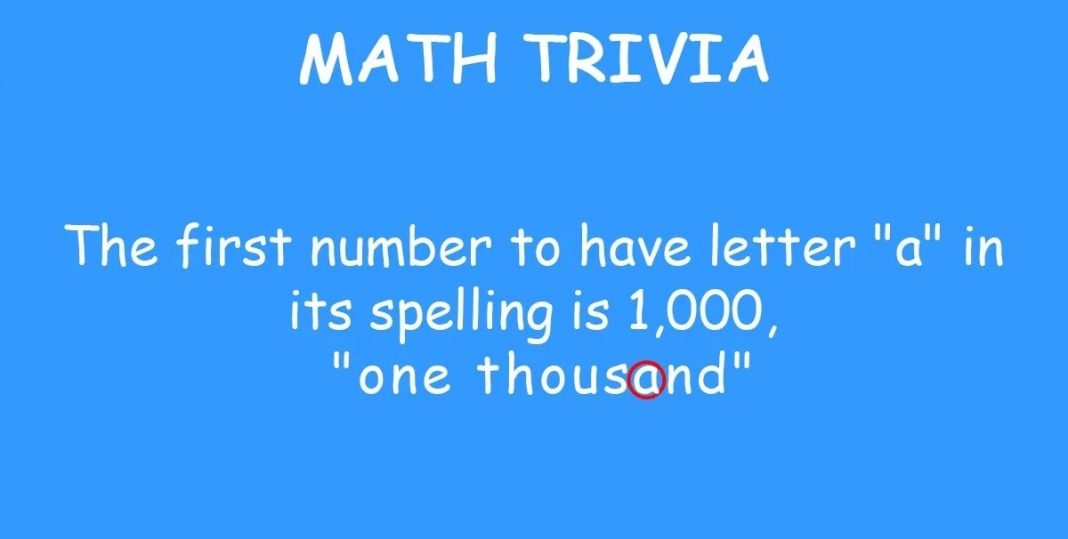Do you think you’re good at math? Ready to challenge yourself with some fun math trivia questions with answers? Here are some math trivia questions for kids of all ages! See how many you can get right and have a blast while learning.
Math & ELA | PreK To Grade 5
Kids see fun.
You see real learning outcomes.
Watch your kids fall in love with math & reading through our scientifically designed curriculum.
Parents, try for free Teachers, use for free
25 Fun Math Trivia Questions and Answers For Kids
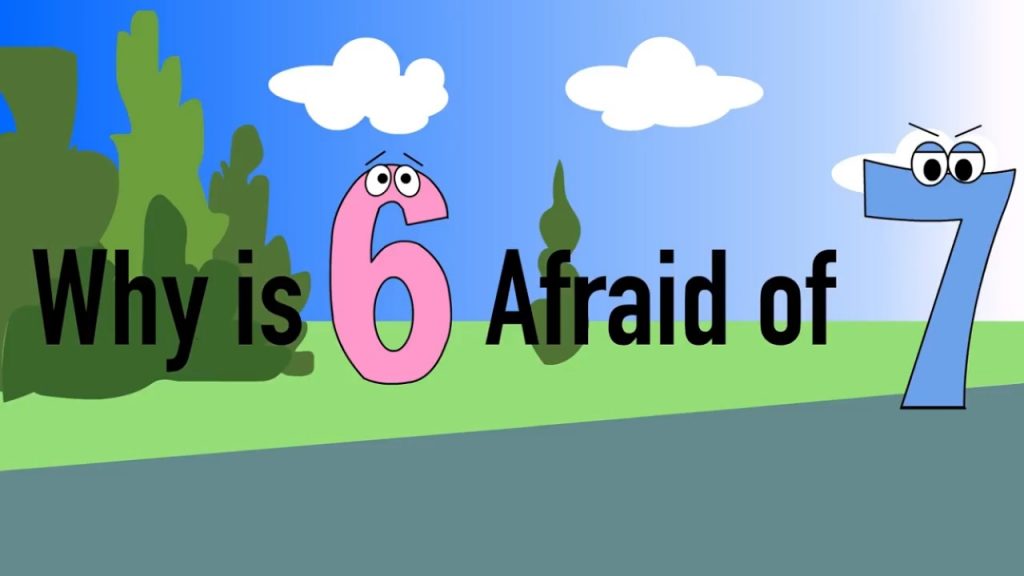
Children engage most with fun math trivia questions that make them giggle. Here are 25 funny math questions that will turn your classroom or a pajama party of toddlers into a laughing riot or serve as excellent icebreakers in any gathering:
Q1: Why was 6 afraid of 7?
A1: Because 7, 8 (ate), 9!
Q2: What do you call a hen that can count her own eggs?
A2: Mathemachicken!
Q3: Why is the math book so sad?
A3: Because it has so many problems!
Q4: What comes six times in a day, four times in a week, twice in a month, and once in a year?
A4: The letter “f.” In 24 hours, “f” comes in four, five, fourteen, fifteen, and twenty-four. In seven days, “f” comes in first, fourth, and fifth. In four weeks, “f” comes in first and fourth. In one year, “f” is only in February.
Q5: Who’s the king of the pencil box?
A5: The ruler!
Q6: What’s the favorite season of a math teacher?
A6: SUMmer!
Q7: What’s a math teacher’s favorite dish?
A7: A pie!
Q8: Why did the plant in the math class become a curiosity in the town?
A8: Because it grew square roots!
Q9: Why are circles the hottest geometric shape?
A9: Because it’s always 360 degrees!
Q10: Why do social activists not like algebra?
A10: Because they are not comfortable with inequalities!
Q11: How does algebra help with dancing skills?
A11: It makes you good at algo-rhythms!
Q12: Which tool can you use to plow your farm?
A12: Pro-tractor!
Q13: What tool do mathematicians use to twist wires?
A13: Multi-Pliers!
Q14: Who do both the acute and the obtuse triangles hate?
A14: A 90-degree angle because it’s ALWAYS right!
Q15: Why is a Circle always ignored in a party of geometric shapes?
A15: Because other shapes think he’s pointless!
Q16: Why did Square not attend the party of geometric shapes?
A16: Because it had an accident and became a WRECK-tangle!
Q17: What did zero think when it saw eight?
A17: What a nice belt!
Q18: How did the boxer break the calculator?
A18: He tried to punch the numbers in!
Q19: What do children think about addition?
A19: They think it’s a plus!
Q20: Why did the mixed-number fraction refuse to go out with the other fraction?
A20: Because it was improper!
Q21: What’s a math teacher’s favorite tree?
A21: Geometry!
Q22: Do you know what’s odd in math?
A22: Any number that’s not divisible by 2!
Q23: Why is the fantasy novel written by a mathematician so confusing?
A23: It had imaginary numbers!
Q24: Which geometric shape is most adorable?
A24: A-cute angle!
Q25: What does the mirror image of the number 3.14 read?
A25: PIE!
Related Reading: Fun Math Questions & Answers for Kids
25 Easy Math Trivia Questions and Answers for Kids
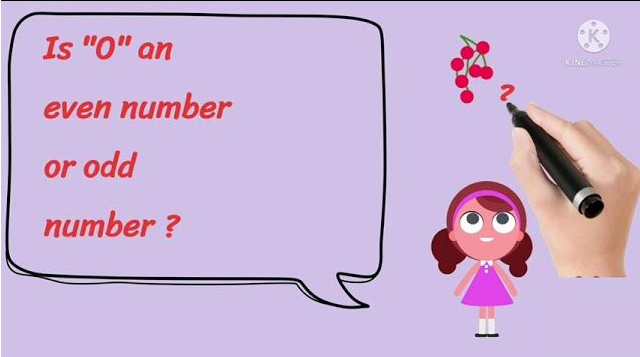
Do you have someone who’s math-phobic? Get them started on these easy math questions, and you’ll soon see them solving math questions for fun.
Q1: What’s the only even prime number?
A1: 2. Every other even number is divisible by two and hence, not a prime number.
Q2: What’s Pythagoras’ Constant?
A2: The square root of two: 1.41! Also, it was the first irrational number to be discovered.
Q3: Which number cannot be represented in Roman numerals?
A3: Zero! There’s no symbol for it in Roman numerals.
Q4: Is zero an odd number or an even number?
A4: Even. It’s divisible by two and still creates a whole number, which is zero.
Q5: Which number has a spelling with the same number of letters as the number itself?
A5: F-O-U-R!
Q6: Which is the smallest perfect number?
A6: Six! It’s a positive integer and equal to the sum of its divisors: 1, 2, and 3. It means that 1 × 2 × 3 = 6 and also, 1 + 2 + 3 = 6.
Q7: Why is March 14 the Pi Day?
A7: Because it’s written as 3/14, and the value of pi is 3.14!
Q8: How many minutes are in an hour?
A8: 60!
Q9: How does the word “Pizza” show the formula to calculate its volume?
A9: For a cylinder, the volume is Pi multiplied by the radius squared, multiplied by its height! If we consider the radius of the pizza as “Z” and its height as “A,” its volume can be calculated as PI × Z × Z × A.
Q10: What are “happy” numbers?
A10: Happy numbers are those numbers that eventually reach one after a process of repeatedly summing the square of its digits. For example, 19 is a happy number: 12 + 92 = 82 and 82 + 22 = 68 and 62 + 82 = 100 and 12 + 02 + 02 = 1.
Q11: What’s the most common number in the world?
A11: One! It’s the number that we use to count things, and it appears in almost every mathematical equation.
Q12: What is a thousand billion?
A12: A trillion
Q13: How many faces does a dodecahedron have?
A13: 12 faces.
Q14: What’s a “deficient” number?
A14: A deficient number is a number where the sum of its divisors is less than double the number itself. For example, 9 is a deficient number. Its divisors are 1, 3, and 9, and the sum of these divisors is 1 + 3 + 9 = 13, which is less than 2 x 9 = 18.
Q15: What’s a “triangular” number?
A15: A triangular number is a number that can be represented as a triangle of dots. For example, 6 is a triangular number. It can be represented as 1 dot + 2 dots + 3 dots.
Q12: How many zeros are there in one billion?
A12: Nine zeros.
Q17: What’s an “evil” number?
A17: An evil number is a positive integer with an even number of 1s in its binary representation. For example, 3 is an evil number. Its binary representation is 11, which has two 1s, which is even.
Q18: What’s a “palindrome”?
A18: A palindrome is a word, phrase, number, or other sequence of units that can be read the same way in either direction—forward or backward. For example, the number 11011 is a palindrome, as is the phrase “Madam, I’m Adam.”
Q19: Which number is greater: a googol or a quadrillion?
A19: A googol. It represents 1 × 10100.
Q20: If a triangle has angles measuring 30°, 60°, and 90°, what type of triangle is it?
A20: A right triangle.
Q21: What’s the Fibonacci sequence?
A21: The Fibonacci sequence is a sequence of numbers in which each number is the sum of the previous two. It begins with 0 and 1 and then proceeds as 0, 1, 1, 2, 3, 5, 8, 13, 21, 34, and so on.
Q22: What is the sum of the angles in a triangle?
A22: 180 degrees
Q23: What is the first 2-digit prime number?
A23: 11
Q24: How many quarters make a dollar?
A24: 4
Q25: What do you call a polygon with 20 sides?
A25: An icosagon.
25 Hard Math Trivia Questions for Kids
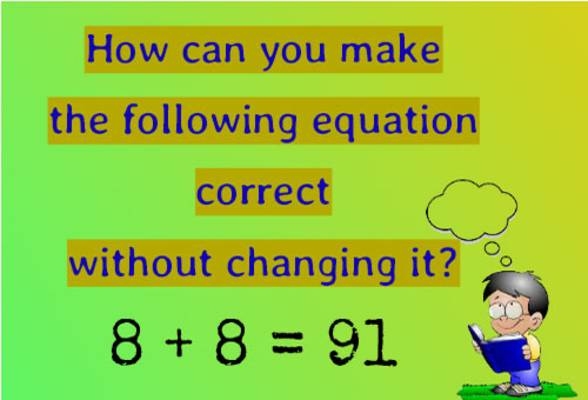
Q1: What is a Googol?
A1: 1 followed by 100 zeros.
Q2: What is the only number that is spelled with its letters in alphabetical order?
A2: Forty.
Q3: What is the smallest prime number greater than 100?
A3: 101.
Q4: In how many ways can you arrange the letters in the word “MATH”?
A4: 24 ways. (4 factorial = 4! = 24)
Q5: What’s the “chaos game”?
A5: The chaos game is a simple algorithm that can be used to generate fractal patterns. It involves picking a point at random inside a triangle and then finding the midpoint of the line segment between that point and each of the triangle’s vertices. The next point is chosen randomly from the three resulting midpoints, and the process is repeated ad infinitum.
Q6: What is the sum of the interior angles of a pentagon?
A6: 540 degrees.
Q7: What’s an “abundant” number?
A7: An abundant number is a number where the sum of its divisors is greater than the number itself. For example, 12 is an abundant number. Its divisors are 1, 2, 3, 4, 6, and 12, and the sum of these divisors is 1 + 2 + 3 + 4 + 6 + 12 = 28, which is greater than 12.
Q8: What’s an “amicable” number?
A8: Amicable numbers are two numbers where the sum of one number’s divisors equals the other number and vice versa. For example, 220 and 284 are amicable numbers. For 220, the sum of its divisors is 1 + 2 + 4 + 5 + 10 + 11 + 20 + 22 + 44 + 55 + 110 = 284, and for 284, the sum of its divisors is 1 + 2 + 4 + 71 + 142 = 220.
Q9: What’s an “Armstrong number”?
A9: An Armstrong number is an integer where the sum of the cubes of its digits is equal to the number itself. For example, 153 is an Armstrong number: 13 + 53 + 33 = 153.
Q10: If you add up the first 10 prime numbers, what is the sum?
A10: 129.
Q11: What’s the value of π (Pi) to five decimal places?
A11: 3.14159.
Q12: What’s a Harshad Number?
A12: Harshad numbers, also known as Niven numbers, are divisible integers by the sum of their digits. For example, 42 is a Harshad number. It is divisible by 4 + 2 = 6.
Q13: What’s the “tribonacci” sequence?
A13: The Tribonacci sequence is a sequence of numbers in which each number is the sum of the previous three numbers. It begins with 0, 0, and 1.
Sequence: 0, 0, 1, 1, 2, 4, 7, 13, 24, and so on.
Q14: What is the smallest perfect number?
A14: 6.
Q15: What is the binary equivalent of the decimal number 25?
A15: 11001.
Q16: What is the sum of the first 100 natural numbers?
A16: 1 + 2 + … + 100 = 1001012=5050
Q17: How many digits are in the number 10 raised to the power of 1000?
A17: 1001 digits.
Q18: What is the sum of all the angles in a heptagon?
A18: 900 degrees.
Q19: What’s the Golden Beauty Ratio?
A19: The golden beauty ratio is a mathematical constant that is approximately equal to 1.61803. It is often represented by the Greek letter phi, and it appears in many places in nature, such as in the spiral pattern of a nautilus shell.
To judge the attractiveness of a human face, its length and width are measured. The length is then divided by the width. The ideal result is closest to the Golden Beauty Ratio of 1.61803.
Q20: What is the value of e (Euler’s number) to three decimal places?
A20: 2.718.
Q21: If a fair coin is tossed 3 times, what is the probability of getting exactly two heads?
A21: 3/8.
Q22: How many edges does a cube have?
A22: 12 edges.
Q23: What is the factorial of 5?
A23: 120 = 5 4 3 2 1
Q24: What is the only even number that is also a prime number?
A24: 2.
Q25: What’s the most beautiful equation?
A25: eiπ+1=0
Related Reading: Hard Trivia Questions and Answers for Kids
25 Tricky Math Trivia Questions and Answers for Kids
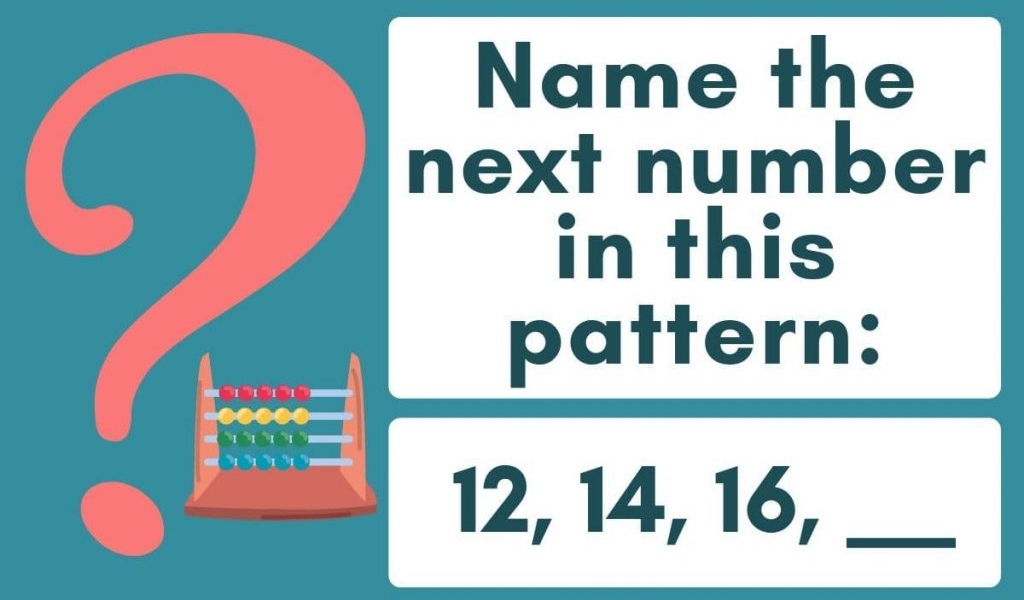
Trick math questions are designed to confuse you or misguide you while the answer’s right in front of you the whole time! Do you think that these fun math trivia questions are cute and easy to solve? Check your answers against ours and see how you fare!
Q1: If two’s company and three’s a crowd, what are four and five?
A1: 9!
Q2: I gave a duck $9, a bee $27, and a spider $36. How much would I give to the cat?
A2: $18 (according to $4.50 per leg)!
Q3: A grandfather, two fathers, and two sons went to the movie theater. How many tickets did they buy?
A3: 3! A grandfather, a father, and a son. The grandfather is the “father” of the father. The father is the “son” of the grandfather.
Q4: A woman goes out to buy bananas. All but 3 got ruined on the way. How many good bananas does she have now?
A4: 3! All but “3” were ruined.
Q5: If there are 10 apples on the table and you take away 2, how many apples do you have?
A5: 2! You only took two apples.
Q6: I am odd. But you take away an alphabet and I am even. What am I?
A6: S-Even!
Q7: How can you arrange only eights to get the number 1000 in a mathematical equation?
A7: 888 + 88 + 8 + 8 + 8 = 1000!
Q8: How did the soccer fan know the score would be 0-0 even before the game started?
A8: Because the score is always 0-0 when the game begins.
Q9: I added 5 to 9 and got two. The teacher said I was right. Do you know how?
A9: I added 5 hours to 9 a.m. and got 2 p.m.!
Q10: How can you make 5 + 5 + 5 = 550 correct by drawing only one straight line?
A10: Add a line on the first plus sign to make it “4.” This makes the equation 545 + 5 = 550!
Q11: Calculate:
1 + 1 + 1 + 1 + 1
1 + 1 + 1 + 1 + 1
1 + 1 x 0 + 1 = ?
A11: 30!
We apply the BODMAS (Brackets, Order of Powers, Division, Multiplication, Addition, and Subtraction) rule here.
So, we see a multiplication sign here and do it first. 1 x 0 = 1.
So, the lines will look like this now:
1 + 1 + 1 + 1 + 1
1 + 1 + 1 + 1 + 1
1 + 0 + 1
Now, notice that there are no mathematical operations after the last “1” on the first line or the first “1” on the second line. Hence, we assume that they can be put together to form the number “11.” The same goes for the last “1” on the second line or the first “1” on the third line. They can be put together to form the number “11.”
Now we get:
1 + 1 + 1 + 1 + 11 + 1 + 1 + 1 + 11 + 0 + 1 = 30.
Q12: A half is a third of which number?
A12: One and a half!
Q13: What to add between a 4 and a 5 to make the result greater than 4 and less than 5?
A13: A decimal! 4.5 is greater than four and less than 5.
Q14: Lisa was 6 when Lucy was 3. Lisa is 60 now. How old is Lucy?
A14: 57! Lucy is only three years younger than Lisa.
Q15: Ray works in a dog shelter. When he puts one dog in a cage, he has an extra dog left. If he puts two dogs per cage, he has an extra cage left. How many dogs and how many cages does Ray have?
A15: Three cages and four dogs.
Q16: I bought a rooster today and the salesman told me I can expect two eggs daily. How many eggs will I have in a week?
A16: None. Roosters don’t lay eggs. Only hens do.
Q17: You have a five-gallon water jug and an empty three-gallon jug. How can you measure out exactly four gallons of water?
A17: Fill the 5-gallon jug and pour the water from it into the 3-gallon jug until the latter is full. Now, you will have 2 gallons of water left in the 5-gallon jug. Empty the 3-gallon jug. Pour the 2 gallons from the 5-gallon jug into the 3-gallon jug.
Now fill the 5-gallon jug again and pour water into the 3-gallon jug until it is full. You will only be able to pour out 1 gallon of water and will have 4 gallons of water in the 5-gallon jug!
Q18: What weighs more: 16 ounces of soda or one pound of gold?
A18: Both weigh the same. 1 pound = 16 ounces.
Q19: How many times can you subtract 5 from 25?
A19: Only once. Because once you subtract 5, 25 becomes 20 (and is not 25 anymore)!
Q20: If there are 50 students in your class and you have to shake every student’s hand, how many times will you shake hands?
A20: 49. You will subtract yourself from the number of students in the class.
Q21: Arrange numbers 1 to 9 in the right order in a mathematical equation so that the result is 100.
A21: 1 + 2 + 3 + 4 + 5 + 6 + 7 + (8 x 9) = 100.
Q22: If you count 10 houses on the right while going to school and 10 on the left while returning from school on the same route, how many houses did you count?
A22: 10. The houses on the right will be on your left when you return.
Q23: What’s the angle between the minute hand and the hour hand of a wall clock at a quarter past three?
A23: 7.5 degrees!
Q24: What number is equivalent to 34/32?
A24: 9!
Q25: Some cards are lost from a pack of cards. If I deal them among three people, two cards are left over. If I deal them among four people, three cards are left over. If I deal with five people, two cards are left over. How many cards are there in the pack?
A25: 47!
Related Reading: Best Tricky Questions for Kids [With Answers]
10 Math Facts Trivia Questions
Ready to try fun math trivia for kids based on facts? Let’s dive in!
Q1: What number is known as the additive identity in mathematics?
A1: 0
Q2: How many factors does a prime number have?
A2: 2
Q3: What is the base of a decimal number system?
A3: 10
Q4: What are the arithmetic operations under which natural numbers are commutative?
A4: Addition and multiplication
Q5: How many centimeters are in a meter?
A5: 1 meter = 100 centimeters
Q6: What’s the third place to the right of a decimal point?
A6: Thousandths place
Q7: What are related fractions?
A7: Two fractions where one denominator is a multiple of the other
Q8: What is the decimal equivalent of 3/4?
A8: 0.75
Q9: 1009998…3210
A9: 0
Q10: How do you define multiplication?
A10: Repeated addition
16 Topic-Based Math Trivia Questions
Do you love diving deep into specific math topics? Then you will love these fun and challenging trivia questions about your favorite math subjects—Algebra, Number Sense, and Geometry! Put your knowledge to the test, or quiz your friends and see who comes out on top!
6 Algebra Trivia Questions
Q1: Why did the equal sign go to therapy?
A1: It had too many unresolved equations!
Q2: Why is everyone irritated by the letter x?
A2: Because it never wanted to solve its own problems!
Q3: Why is the constant not happy with the variable?
A3: Because the variable keeps changing!
Q4: What do you call an argument between two parentheses?
A4: A “bracket” match!
Q5: Why did the mathematician bring a ladder to the equation?
A5: To reach the highest exponent!
Q6: What did the variable ask the constant?
A6: Why do you always look the same?
5 Number Trivia Questions
Let’s see how well you know your numbers! These quirky trivia questions will put your math skills to the test.
Q1: Why don’t Roman numerals ever go to a party?
A1: Because they don’t know how to count to zero!
Q2: What did the number 2 say at the Even Numbers Club?
A2: “I’m the only prime member!”
Q3: Is 0 positive or negative?
A3: 0 is neither positive nor negative!
Q4: How did the decimal with a 0 decimal part feel?
A4: It felt whole!
Q5: How many millions make a billion?
A5: 1,000
5 Geometry Trivia Questions
It takes a real Geometry genius to understand and solve these fun Geometry trivia questions! Are you ready to try?
Q1: Why is a line always tired?
A1: Because it never stops—it just keeps going on and on!
Q2: What will two parallel lines say to each other?
A2: Nothing! They’ll never meet to have a chat!
Q3: What does a point say to a ray?
A3: “You may begin here, but I know you’ll go far!”
Q4: What does a 180-degree angle say to a straight line?
A4: “We look alike—we’re both straight to the point!”
Q5: What is the name of the longest side of a right-angled triangle?
A5: Hypotenuse
Related Reading: Best Math Riddles for Kids with Answers
Conclusion
Math is fun when you approach it with curiosity and playfulness. Our math trivia quiz is full of riddles and puzzles that can make learning enjoyable and feel like a game. Try out these math trivia questions for kids and see how many you can solve!
Related Reading: Fascinating Trivia Questions for Kids [With Answers]
Frequently Asked Questions (FAQs)
How can I introduce my kids to math games?
There are many different types of math games, including classroom math games, online games, math board games, card games, and even physical games. A math game is an interactive way to engage kids in learning and help them develop important skills and concepts in a fun and exciting way.
What are some benefits of playing math games?
Math games can provide many benefits for kids, including helping them practice important skills and concepts, introducing new topics in a fun and interactive way, and providing a much-needed break from the more traditional learning environment.
How can I make math concepts more relatable for kids?
One of the best ways to make math concepts more relatable and understandable for kids is to connect them to everyday situations. When kids can see how the numbers they are working with relate to the world around them, they are more likely to grasp the concept and be able to apply it in other situations.
Why is 0 a number?
0 is a number because it represents the absence of quantity or value, the idea of “nothingness.” While it might seem counterintuitive that something can be a number without representing a positive quantity, 0 plays a crucial role in our number system. It is the additive identity of real numbers, meaning that when you add 0 to any real number, the number remains unchanged.

















